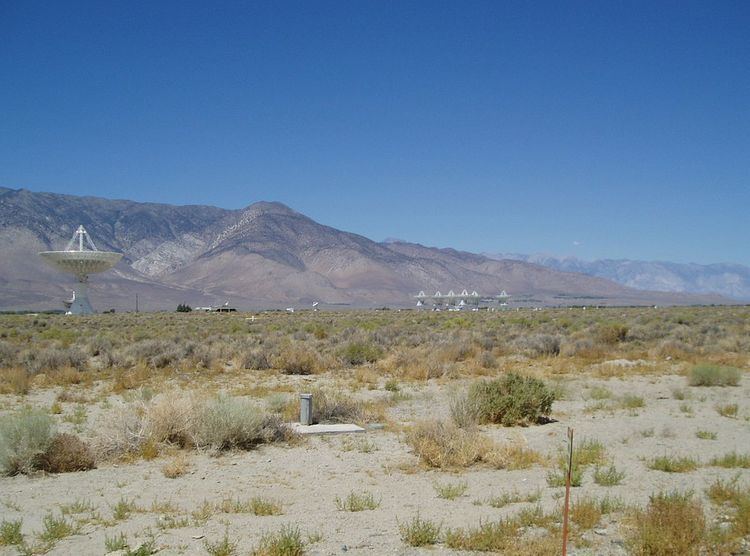Altitude 1,222 m (4,009 ft) Website www.ovro.caltech.edu Phone +1 760-938-2075 | Established 1958 Address Big Pine, CA 93513, USA | |
 | ||
Location Big Pine, United States of America Telescopes Combined Array for Research in Millimeter-wave Astronomy, OVRO 40 meter Telescope, C-Band All Sky Survey, Owens Valley Solar Array, Frequency-Agile Solar Radiotelescope | ||
Owens valley radio observatory
Owens Valley Radio Observatory (OVRO) is a radio astronomy observatory located near Big Pine, California (USA) in Owens Valley. It lies east of the Sierra Nevada approximately 350 kilometers (220 mi) north of Los Angeles and 20 kilometers (12 mi) southeast of Bishop. It was established in 1958, and is owned and operated by the California Institute of Technology (Caltech).
Contents
- Owens valley radio observatory
- Owens valley radio observatory milky way time lapse
- About
- CARMA
- Instruments
- Former instruments
- Future Instruments
- In popular culture
- References
One of the ten dish-antenna radiotelescope systems of the Very Long Baseline Array is immediately adjacent to, but not part of, the Owens Valley observatory.
Owens valley radio observatory milky way time lapse
About
The Owens Valley Radio Observatory (OVRO), the largest university-operated radio observatory in the United Sates, came to life in the late 1940s through the influence of three individuals: Lee DuBridge, president of Caltech; Robert Bacher, chairman of the Division of Physics, Mathematics and Astronomy; and Jesse Greenstein, professor of astrophysics. In 1954, Caltech occupied a central position in the American radio astronomy program. John Bolton and Gordon Stanley, two respected Australian astronomers, joined the Caltech faculty in order to undertake the construction of large dishes. In 1956 the first radio telescope, a 32-foot antenna, was erected on Palomar Mountain. It was dismantled in 1958 and transferred to the Owens Valley site. At the same time, two 90-foot (27-meter) telescopes were completed. Ten years later, an even bigger antenna, a 130-foot (40-meter) dish was finished. It was originally built to study radio galaxies but is now used to look at the sun's magnetic field. The last major instrument at the observatory is the millimeter-wave array. It consists of six 34-foot (10.4-meter) dishes (also called Leighton's dishes).
OVRO, owned by Caltech, is one of the biggest radio observatories owned by a university. OVRO uses its telescopes and other instruments (listed below) to improve on the locations of radio sources in the sky, as well as to study hydrogen clouds within the Milky Way. The research that takes place at the observatory includes studies on blazars, the cosmic microwave background, and star-formation, and this research is done by the staff at the observatory with help from professors and post-doctoral students from many institutions. The observatory is different from other national radio observatories because of its extensive work with graduate students, who can come to the observatory for long-term observation, benefitting not only the students, but also the observatory as it allows for more comprehensive projects to take place
CARMA
OVRO staff is largely responsible for operating CARMA, which is located 20 miles east of OVRO in the Inyo Mountains. CARMA is a collaboration between Caltech, University of California Berkeley, University of Illinois, University of Maryland, and University of Chicago to observe space at centimeter and millimeter wavelengths with a 23-element interferometer. CARMA uses this interferometer to study the origins of planets, stars and galaxies, as well as to measure the distortions in the cosmic microwave background caused by clusters of galaxies formed soon after the Big Bang.
Instruments
Former instruments
Future Instruments
In popular culture
In the film The Arrival (1996), Zane Zaminsky (Charlie Sheen) and Calvin (Richard Schiff) work at Owens Valley for the SETI Project and discover an alien signal.
In the film Contact (1997), the Owens Valley 40-meter telescope is mentioned as the location where Dr. Eleanor Arroway (Jodie Foster) did her thesis work.
